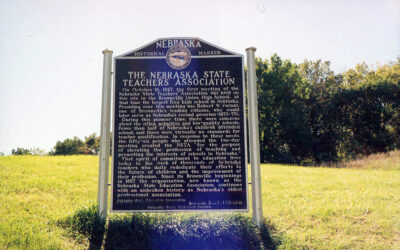African-American soldiers on the western frontier are the focus of an exhibit at the Nebraska History Museum in Lincoln. Buffalo Soldiers West, on loan from the Colorado Historical Society, is considered by many experts to be the finest presentation in the country on this important subject. The exhibit, curated by Bill Gwaltney, himself a descendant of a buffalo soldier, tells the fascinating story of African American soldiers in the American West after the Civil War.
In 1866 Congress authorized the recruitment of African American soldiers to man isolated outposts in the western frontier that were established to help create permanent settled communities. Having recently been freed from slavery, black men eagerly responded to the government’s postwar call for troops and saw military service as an opportunity for a steady income, education, self-respect, equality, and unquestionable status as a U.S. citizen. In 1866 the black cavalry units and four black infantry regiments were formed to man western outposts (including Fort Robinson, Nebraska) and from 1866 until 1892, more than 10,000 black soldiers moved west to help create a new way of life.
The importance of these men in the development of the American West went beyond serving in combat; they helped build frontier forts, constructed telegraph lines, patrolled the Mexican border, arrested whiskey peddlers, removed unauthorized settlers, and captured thieves and outlaw gangs. Their name, the name that may have been a source of pride, was given to them by their Plains Indian opponents: Buffalo Soldiers.
Buffalo Soldiers West uses an extraordinary collection of photographs, uniforms, weapons, and accoutrements of life on the post and on the campaign. The exhibit will run through Labor Day of 1997.



